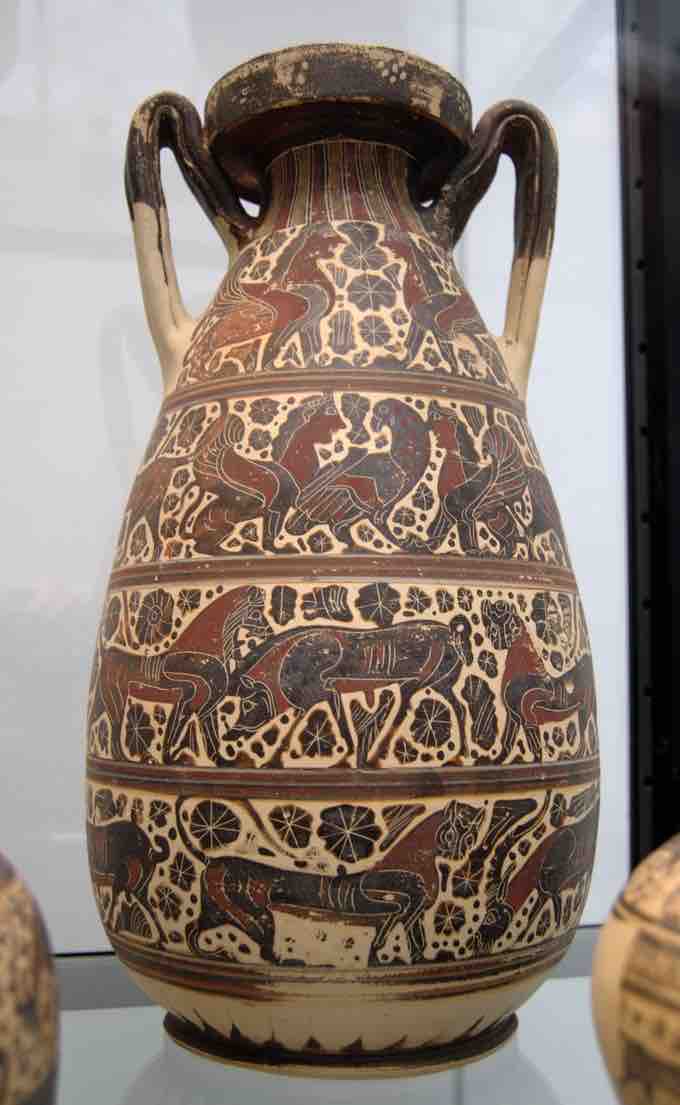The Orientalizing Period followed the Geometric period and lasted for about a century, from 700 to 600 BCE. This period was distinguished by international influences, from the Ancient Near East, Egypt, and Asia Minor, each of which contributed a distinctive Eastern style to Greek art. The close contact between cultures developed from increasing trade and even colonization. Motifs, creatures, and styles were borrowed from others cultures by the Greeks transformed into a unique Greek-Eastern mix of style and motifs.
Corinthian Pottery
During the Orientalizing period in Corinth, human figures were rarely seen on vases. Animals such as lions, griffins, sphinxes, and sirens were depicted instead. Palmettes and lotus blossoms were used instead of geometric patterns to fill empty space, although on some vessels negative space became more prominent. This oriental black figure style originated in the city of Corinth, spread to Athens, and was exported throughout Greece.

Corinthian black figure jug
Corinthian black figure jug with animal frieze, ca. 580 BCE.
The Corinthians developed the technique of black figure painting during this period. Black figure pottery was carefully constructed and fired three different times to produce the unique red and black colors on each vase. The black color came from a slip painted onto the vessel, after which incised lines were drawn on to outline and detail the figures. Additionally, red and white pigments could be added for more color or to differentiate details. Unpainted portions of the vase would remain the original red-orange color of the pot. The full effect of this style of painting would not have been seen until after the vase emerged from its firings in the kiln. As the style spread, the subject matter changed from strictly Near Eastern animals to scenes from Greek mythology and everyday life.
Proto-Attic Pottery
Pottery produced during the Orientalizing Period across the Isthmus of Corinth in Athens is known as Proto-Attic. In this region, floral and animal motifs are common, but the human figure appears in the work of the most prominent painters such as the Analatos Painter, the Mesogeia Painter, and the Polyphemos Painter. The Proto-Attic style marked the first depictions of discernibly Greek religious and mythological themes in vase painting. The bodies of men and animals were depicted in silhouette, though their heads were drawn in outline. Women were drawn completely in outline. Proto-Attic vases are usually distinguished by orange clay available in the Athens area.
Polyphemos Painter,The Blinding of Polyphemos, c. 600 BCE.
This detail from Proto-Attic amphora shows the outline- and silhouette-based forms in which the human body was depicted at the time, as well as the orange clay available to Attic ceramicists.